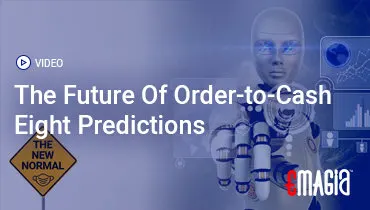Introduction: The Rise of Generative AI in Credit Processing
In the rapidly evolving financial landscape, generative AI is emerging as a transformative force in credit processing. By leveraging advanced machine learning models, financial institutions can automate and enhance various aspects of the credit lifecycle, from application to approval and beyond. This technology not only accelerates decision-making but also improves accuracy, reduces operational costs, and expands access to credit for underserved populations.
Understanding Generative AI in the Context of Credit Processing
What is Generative AI?
Generative AI refers to algorithms that can create new data or content based on the patterns learned from existing data. In credit processing, this means generating insights, predictions, and even documents that aid in evaluating creditworthiness and managing credit risk.
Evolution of Credit Processing
Traditionally, credit processing involved manual assessment of financial documents, credit histories, and other relevant data. With the advent of digital technologies, some automation was introduced. However, generative AI takes this a step further by enabling real-time analysis and decision-making, significantly reducing the time and resources required.
Applications of Generative AI in Credit Processing
Automated Credit Scoring
Generative AI models can analyze vast amounts of structured and unstructured data to assess an individual’s creditworthiness. This includes traditional data like credit history and income, as well as alternative data such as social media activity and utility payments. By doing so, lenders can make more informed decisions and extend credit to a broader customer base.
Fraud Detection and Prevention
AI systems can identify patterns indicative of fraudulent behavior by analyzing transaction data and user behavior. This proactive approach helps in preventing fraud before it occurs, safeguarding both the institution and its customers.
Personalized Loan Offers
By understanding individual customer profiles, generative AI can tailor loan products to meet specific needs, enhancing customer satisfaction and increasing the likelihood of loan acceptance.
Document Generation and Management
AI can automate the creation of necessary documents such as loan agreements and credit reports, ensuring consistency and compliance while freeing up human resources for more strategic tasks.
Benefits of Implementing Generative AI in Credit Processing
Increased Efficiency
Automation of routine tasks leads to faster processing times, allowing institutions to serve more customers in less time.
Enhanced Accuracy
AI models reduce human error by consistently applying the same criteria to all applications, leading to fairer outcomes.
Cost Reduction
By minimizing manual labor and streamlining processes, institutions can significantly cut operational costs.
Improved Customer Experience
Faster decisions and personalized services enhance customer satisfaction and loyalty.
Challenges and Considerations
Data Privacy and Security
Handling sensitive financial data requires stringent security measures to protect against breaches and ensure compliance with regulations.
Bias and Fairness
AI models can inadvertently perpetuate existing biases present in training data. It’s crucial to implement measures that detect and mitigate such biases to ensure equitable treatment of all applicants.
Regulatory Compliance
Financial institutions must ensure that their use of AI complies with all relevant laws and regulations, which may vary by jurisdiction.
Integration with Existing Systems
Incorporating AI into legacy systems can be complex and may require significant investment and restructuring.
Future Outlook
As technology continues to advance, the role of generative AI in credit processing is expected to grow. Future developments may include more sophisticated models capable of understanding nuanced human behaviors and economic indicators, leading to even more accurate and fair credit assessments.
How Emagia Revolutionizes Credit Processing with Generative AI
Emagia leverages generative AI to transform credit processing by automating and enhancing various aspects of the credit lifecycle. Their AI-driven platform offers:
- Automated Credit Assessments: Utilizing AI to evaluate credit applications swiftly and accurately.
- Fraud Detection: Implementing advanced algorithms to identify and prevent fraudulent activities.
- Personalized Customer Engagement: Tailoring communication and offers to individual customer profiles.
- Document Automation: Generating necessary documentation efficiently and consistently.
By integrating these capabilities, Emagia enhances operational efficiency, reduces costs, and improves customer satisfaction in credit processing.
FAQs
What is generative AI in credit processing?
Generative AI in credit processing refers to the use of AI models that can analyze data and generate outputs such as credit scores, risk assessments, and necessary documentation, thereby automating and enhancing the credit evaluation process.
How does generative AI improve credit scoring?
By analyzing a broader range of data, including non-traditional sources, generative AI provides a more comprehensive assessment of an individual’s creditworthiness, leading to more accurate and fair credit scores.
Can generative AI help in fraud detection?
Yes, generative AI can identify patterns and anomalies in data that may indicate fraudulent activity, allowing institutions to take preventive measures proactively.
What are the risks associated with using AI in credit processing?
Risks include potential biases in AI models, data privacy concerns, regulatory compliance challenges, and the complexity of integrating AI with existing systems.
Is generative AI cost-effective for financial institutions?
While the initial investment may be significant, the long-term benefits of increased efficiency, reduced errors, and enhanced customer satisfaction often lead to cost savings and improved profitability.
By embracing generative AI, financial institutions can revolutionize credit processing, making it more efficient, accurate, and customer-centric. As the technology continues to evolve, its integration into credit systems will become increasingly essential for staying competitive in the financial sector.



